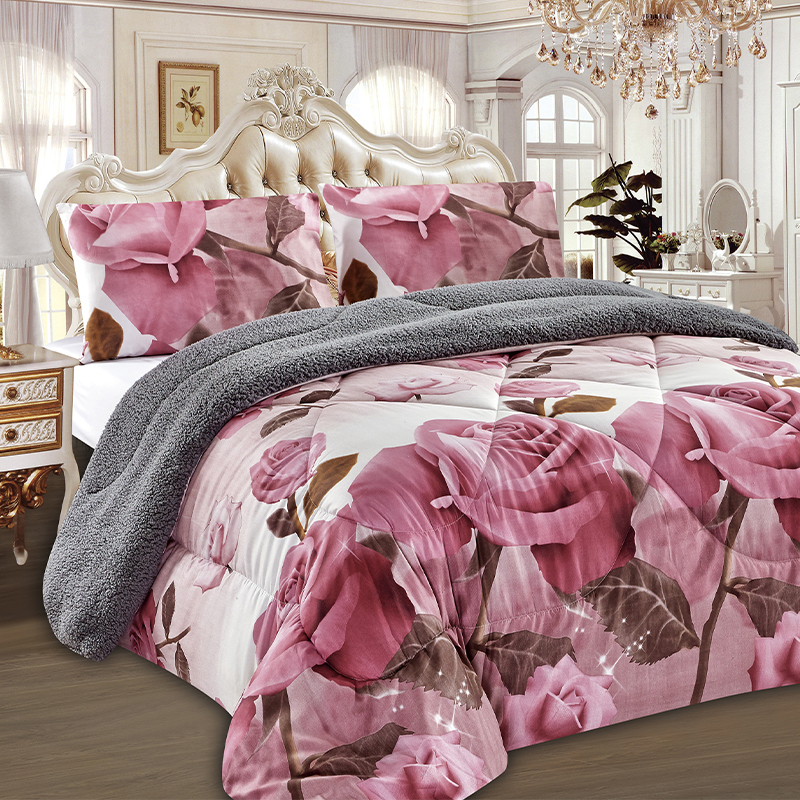Lamb’s wool quilts, known for their exceptional warmth, breathability, and natural softness, have been gaining significant traction in global markets, particularly in regions with colder climates. The demand for these quilts is influenced by various factors, including their unique properties, growing awareness of natural and sustainable materials, and cultural preferences for high-quality bedding. As consumers become more focused on comfort, sustainability, and long-term value, lamb’s wool quilts have emerged as a luxurious yet practical option in both domestic and commercial bedding markets.
In colder regions like Northern Europe, Canada, and parts of the United States, lamb’s wool quilts are prized for their natural insulating properties. Unlike synthetic materials, lamb’s wool has an inherent ability to regulate temperature by trapping air within its fibers, which helps maintain warmth without causing overheating. This breathability is a key selling point, especially for consumers who want to stay warm but not sweaty during the night. Wool’s ability to wick moisture away from the body further enhances sleep quality, making these quilts a popular choice among those who prioritize comfort during long, cold winters. These functional qualities drive demand in markets where winter lasts several months, and consumers are willing to invest in high-performance bedding that enhances their comfort in extreme temperatures.
Sustainability is another factor contributing to the rising demand for lamb’s wool quilts. As consumers in colder regions become more environmentally conscious, there is a growing preference for natural and renewable materials. Wool is not only biodegradable but also renewable, as it is shorn from sheep annually without harm to the animal. In regions like Scandinavia and New Zealand, where eco-friendly practices are embraced, the demand for sustainable bedding materials is steadily rising. This interest extends beyond individual households to commercial buyers, such as luxury hotels and eco-resorts, which are increasingly using natural wool bedding to align with their sustainability goals and attract environmentally conscious guests. The global push for green products has made lamb’s wool quilts an appealing option in colder climates where both warmth and eco-friendliness are essential selling points.
Beyond functionality and  sustainability, the commercial appeal of lamb’s wool quilts is also rooted in their perceived luxury. Wool, particularly lamb’s wool, is often associated with high-end textiles due to its softness and premium quality. Markets in colder, affluent regions like Europe, Japan, and parts of North America, where consumers are willing to pay a premium for bedding that combines luxury with practicality, are particularly receptive to lamb’s wool quilts. These quilts are frequently marketed as investment pieces that offer long-term durability, with lamb’s wool known for maintaining its loft and warmth over time, unlike synthetic fillers that can break down and flatten with use. In these markets, consumers see lamb’s wool quilts as a valuable addition to their bedding collections, offering not just warmth, but a sense of refinement and comfort.
sustainability, the commercial appeal of lamb’s wool quilts is also rooted in their perceived luxury. Wool, particularly lamb’s wool, is often associated with high-end textiles due to its softness and premium quality. Markets in colder, affluent regions like Europe, Japan, and parts of North America, where consumers are willing to pay a premium for bedding that combines luxury with practicality, are particularly receptive to lamb’s wool quilts. These quilts are frequently marketed as investment pieces that offer long-term durability, with lamb’s wool known for maintaining its loft and warmth over time, unlike synthetic fillers that can break down and flatten with use. In these markets, consumers see lamb’s wool quilts as a valuable addition to their bedding collections, offering not just warmth, but a sense of refinement and comfort.
Culturally, regions with long histories of sheep farming, such as Australia, New Zealand, and Scotland, also show a strong demand for wool products, including quilts. In these areas, wool is a symbol of local heritage, and using lamb’s wool quilts is often seen as a way to support regional industries and continue traditional practices. The cultural significance of wool also helps drive demand in colder climates, where the local population has long relied on natural wool to survive harsh winters. For instance, in countries like Iceland and Norway, woolen textiles have been integral to everyday life for centuries, and lamb’s wool quilts fit seamlessly into this tradition.
In contrast, in regions with milder climates, the demand for lamb’s wool quilts may be less pronounced, as consumers do not prioritize heavy, insulating bedding for most of the year. However, even in these markets, there is growing interest in lamb’s wool quilts as luxury or seasonal items, particularly among consumers who value natural materials and are seeking alternatives to synthetic fibers.
The global demand for lamb’s wool quilts is highest in regions with colder climates, where the combination of functionality, sustainability, and luxury creates a compelling case for consumers. As trends toward natural living and environmental consciousness continue to grow, it is likely that the demand for lamb’s wool quilts will expand even further, particularly as consumers increasingly recognize their long-lasting benefits and eco-friendly appeal. Whether in homes or commercial establishments, lamb’s wool quilts are steadily establishing themselves as a go-to choice for premium, eco-conscious bedding in markets around the world.
